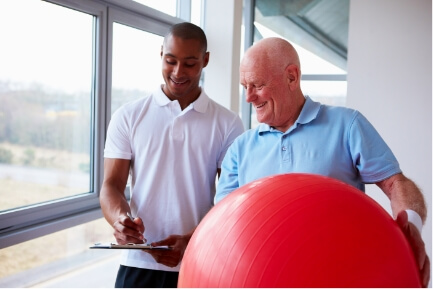Have you ever wondered how athletes bounce back so quickly from sports injuries? It’s not just their dedication or a strict training regime; a significant credit goes to the wonders of physiotherapy. Physiotherapy plays a pivotal role in helping athletes and sports enthusiasts recover from injuries, ensuring they return to their passion stronger and safer. In this article, we’ll dive into how physiotherapy aids in healing sports injuries and prevents future ones, ensuring athletes can continue doing what they love.
Understanding Sports Injuries
Sports injuries can be broadly classified into two categories: acute and chronic.
- Acute Injuries: These occur suddenly during activity. Examples include:
- Sprains: Overstretching or tearing of ligaments, the tissues that connect bones at a joint.
- Strains: Tears in muscles or tendons (the fibers that connect muscles to bones).
- Fractures: Broken bones.
- Dislocations: Bones forced out of their normal position in a joint.
- Chronic Injuries: These result from overusing one body area over a long period. Examples include:
- Stress Fractures: Small cracks in a bone caused by repetitive force or overuse.
- Tendonitis: Inflammation of a tendon due to overuse.
- Osteoarthritis: Degeneration of joint cartilage and the underlying bone, mostly due to repeated trauma or overuse.
Causes of Sports Injuries
Several factors can lead to sports injuries, including:
- Lack of Conditioning: Not being physically prepared for the activity.
- Overtraining: Exercising too hard or too often without adequate rest.
- Improper Technique: Using incorrect form or equipment, especially in sports involving repetitive motions.
- Inadequate Warm-up: Not warming up or stretching properly before engaging in physical activity.
Mechanisms of Injury
Understanding how injuries occur can help in their prevention:
- Impact: Direct blows or falls can cause fractures, sprains, or concussions.
- Overuse: Repetitive motion can lead to stress fractures, tendonitis, and muscle strains.
- Twisting or Bending Abnormally: This can lead to joint injuries, such as sprains and dislocations.
- Sudden Stops and Starts: These movements can strain muscles or ligaments.
Prevention and Awareness
Preventing sports injuries involves a combination of proper training, using the right equipment, understanding your body’s limits, and listening to the signs it gives you. It’s also crucial to understand the importance of rest and recovery in sports.
In summary, a deep understanding of sports injuries, their causes, and prevention strategies is essential for anyone involved in physical activities, whether you’re an amateur enthusiast or a professional athlete. This knowledge not only helps in preventing injuries but also ensures a safer and more enjoyable sporting experience.
The Role of Physiotherapy in Treating Sports Injuries
Section 3: The Benefits of Physiotherapy
Holistic Approach
Physiotherapy goes beyond just treating the injury at hand; it considers the whole body. This holistic approach ensures that not only is the specific injury addressed, but also any underlying issues that could affect overall health and performance. By focusing on the entire body, physiotherapy helps in maintaining balance and preventing overcompensation injuries, which are common when one part of the body is weaker or less flexible than others.
Prevention
One of the key benefits of physiotherapy is injury prevention. Physiotherapists work with athletes to identify areas of weakness or vulnerability and address these before they lead to injury. This proactive approach includes personalized exercise programs, advice on proper sports techniques, and lifestyle changes that collectively reduce the risk of future injuries.
Mental Health Aspect
Recovering from a sports injury isn’t just a physical challenge; it’s a mental one too. Physiotherapy plays a crucial role in boosting the mental health of athletes during recovery. The gradual progress made during therapy sessions often boosts confidence and morale. Plus, understanding the recovery process and being actively involved in it can significantly reduce anxiety and stress associated with injuries.
Section 4: Physiotherapy and Long-Term Athlete Development
Sustainable Performance
Physiotherapy is not just about recovering from injuries; it’s about building a foundation for a long and healthy sports career. By focusing on proper form, strength, flexibility, and endurance, physiotherapy helps athletes to perform at their best consistently, reducing the wear and tear associated with high-level sports.
Injury Education
An essential component of physiotherapy is education. Physiotherapists educate athletes on how to prevent injuries by understanding their causes, recognizing early warning signs, and knowing the correct response to these signs. This education is invaluable for athletes at all levels, helping them to stay injury-free and maintain peak performance.
Finishing Thoughts
To recap, physiotherapy is an invaluable asset in the world of sports, not only for injury recovery but also for prevention and long-term athlete development. Its holistic approach treats the entire body, addresses mental health aspects, and educates athletes on sustainable performance practices. If you’re dealing with a sports injury, or looking to enhance your athletic performance while minimizing the risk of injury, physiotherapy could be exactly what you need.


